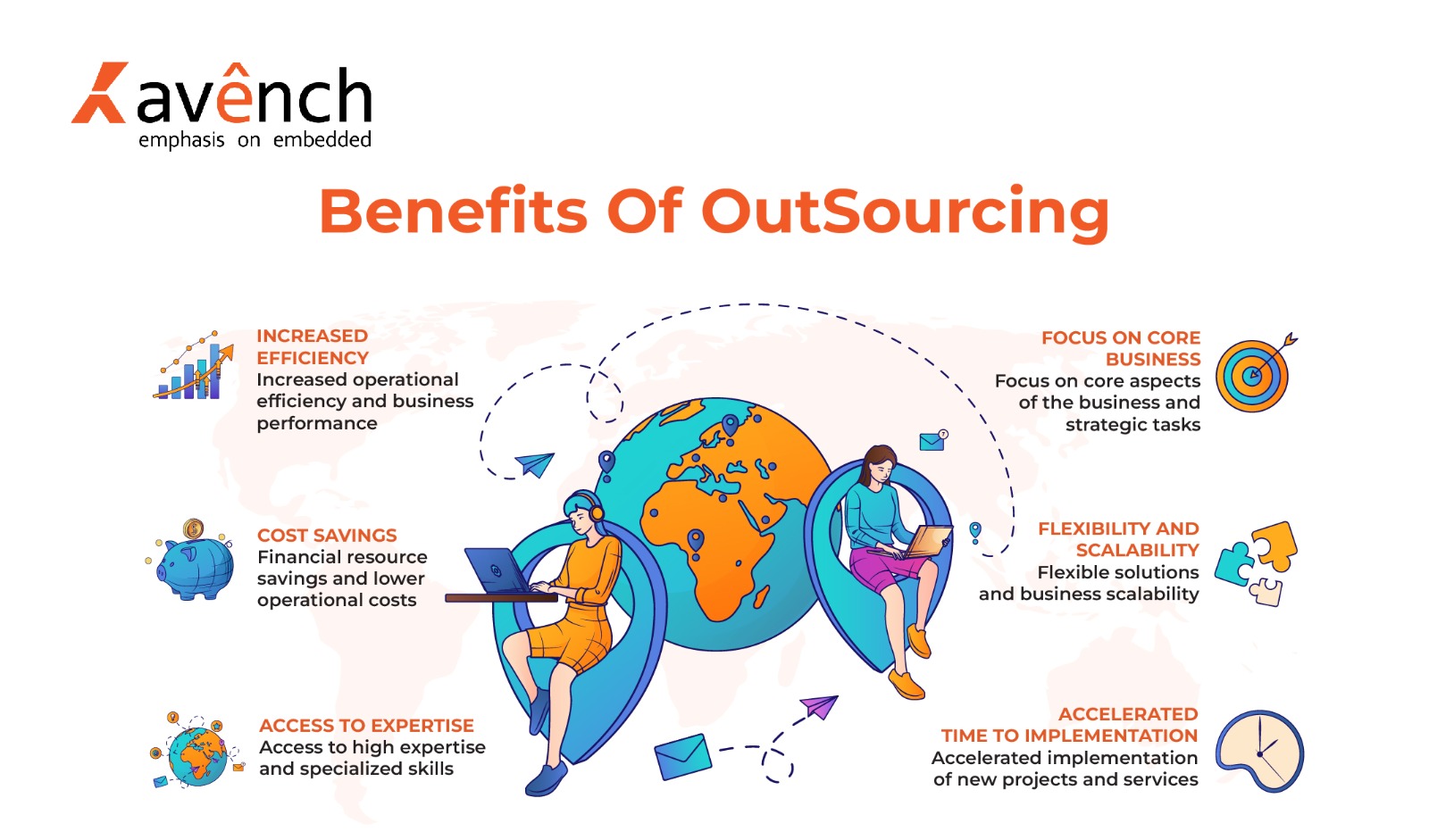Embedded systems design is widely regarded as one of the most difficult fields in engineering. It’s a multidisciplinary field that requires experts from different domains. Companies are always faced with a crucial decision – should they build their team in-house or outsource the embedded project? Both approaches have their pros and cons, and the optimal choice depends on your specific needs and priorities.
 Understanding the In-House Approach:
Understanding the In-House Approach:
Developing an in-house team to design, test, and implement embedded systems, especially considering the complexities of embedded system hardware design, can be a daunting task, especially for mid-size businesses. But with the Industry 4.0 era upon us, not utilizing IIoT devices and embedded systems can leave factories lagging behind. From a cost perspective, it is always better to outsource the project, specifically to locations where skilled talent is cheaper, like India or Southeast Asia. Let’s get a better understanding of the in-house approach to developing embedded systems:
Direct control & stronger team integration
In-house development offers complete control over the project, allowing for smooth integration with existing systems and greater customization. One of the key advantages is that the development team is directly employed by the company, which means they have an in-depth understanding of the company’s goals, culture, and requirements. This level of familiarity can lead to faster development cycles and better collaboration between different departments.
Enhanced security and confidentiality
Another benefit of in-house projects is the ability to maintain confidentiality and protect sensitive information. By keeping the development process in-house, companies can ensure that their intellectual property and trade secrets are safeguarded. Additionally, in-house teams have the advantage of being readily available for any urgent changes or updates that may be required.
Potential for long-term benefits
In-house development allows organizations to train their team from the ground up, ensuring that they are well-versed in using the tools at their disposal to develop software. This includes expertise in embedded software and firmware development, which is crucial for the functioning of embedded systems.
As permanent members of the company, in-house developers are more aware of its needs and can adapt to them as they move from task to task. This compatibility, often referred to as a cultural fit, is a significant advantage of in-house development. Additionally, in-house development fosters reliability, loyalty, and communication within the team, which are essential for delivering successful projects in the long run.
However, there are also some downsides to consider. In-house development can be costly, requiring upfront investments in infrastructure, equipment, and hiring skilled personnel. Companies must also take into account the ongoing expenses associated with salaries, benefits, and training. Moreover, in-house teams may face resource limitations and may not always have the required expertise for complex projects, which can result in delays or suboptimal outcomes.
Should You Outsource Your Embedded Systems Project?
External vendors often have extensive experience working on similar projects, enabling them to bring innovative solutions and best practices to the table. Choosing an experienced embedded software development company as your outsourcing partner can significantly impact the success of your project. They also stay up-to-date with the latest industry trends and technologies, allowing them to use emerging technologies. This is a great way to develop complicated projects and has certain benefits:
Get specialized expertise
Outsourcing provides access to specialized expertise and cost savings. By partnering with an external vendor, companies can tap into a pool of highly skilled professionals who specialize in embedded projects. These experts bring with them years of experience and knowledge that may not be available in-house. Outsourcing also allows companies to scale their development capacity quickly, without the need for long-term commitments or additional investments.
Cost Savings
Cost savings are another significant advantage of outsourcing. By leveraging the lower labor costs and economies of scale offered by outsourcing providers, companies can reduce their development expenses significantly. This can be particularly beneficial for startups and small businesses with limited budgets. Additionally, outsourcing allows companies to allocate their internal resources to core business functions, increasing overall efficiency.
Faster Project Completion
Experienced outsourcing teams often deliver projects faster thanks to a strategic combination of resources and processes. Established project management frameworks like Agile or Waterfall, coupled with industry-specific software and automation platforms, provide a structured and efficient foundation. Furthermore, their access to a global talent pool allows them to tap into specialized skillsets unavailable in a single location, improving project velocity.

Overcoming resource limitations with outsourcing
Many businesses face resource limitations when it comes to embedded systems development. They may not have the necessary technical expertise or personnel to handle the complex development process. Outsourcing provides a solution to these limitations by allowing businesses to leverage the capabilities of the outsourcing partner.
Consider A Hybrid Model
For many businesses, a hybrid model is the best solution, which incorporates components of both in-house and outsourcing methods. This allows organizations to outsource certain tasks while keeping core development in-house. By adopting a hybrid model, a dedicated embedded team from the outsourcing company can be utilized, while allowing knowledge transfer to the in-house team. This model offers the flexibility to access specialized expertise and resources from external teams while maintaining a higher level of control and supervision over core development aspects. Such an approach can be advantageous for organizations aiming to enhance project efficiency and resource management while minimizing potential downsides associated with completely in-house or outsourcing models.
Conclusion: Is outsourcing embedded systems development the right choice for your business?
Outsourcing embedded systems development can be a smart choice for businesses looking to save costs, improve efficiency, and access specialized expertise. By partnering with an experienced outsourcing provider like Avench, businesses can leverage a global talent pool, ensure high-quality deliverables, and overcome resource limitations. With the right partner, it becomes easier to successfully develop and deploy embedded systems that meet your specific requirements and drive growth.
For more information on embedded companies in bangalore subscribe to our blog. For sales queries, contact us at +1 (775) 404-5757 or email sales@avench.com. We are here to assist you.

